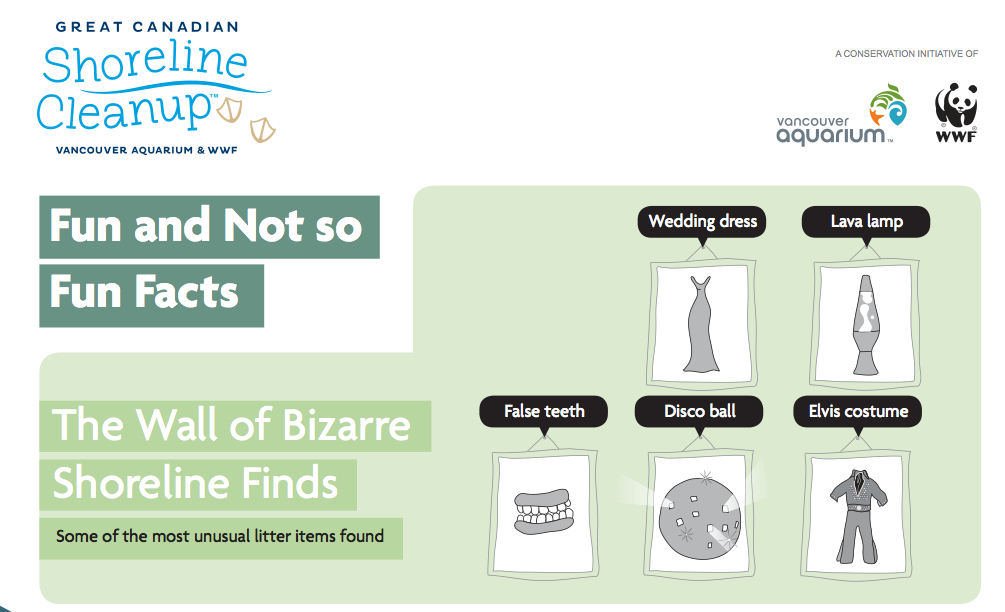Unless you’ve been living under an algae encrusted rock, you should know by now that there is an incredible amount of human-created garbage in our oceans.

Although garbage floating in the ocean is an important issue on its own, it is even more critical to address the waste that has found itself on freshwater and saltwater shorelines.
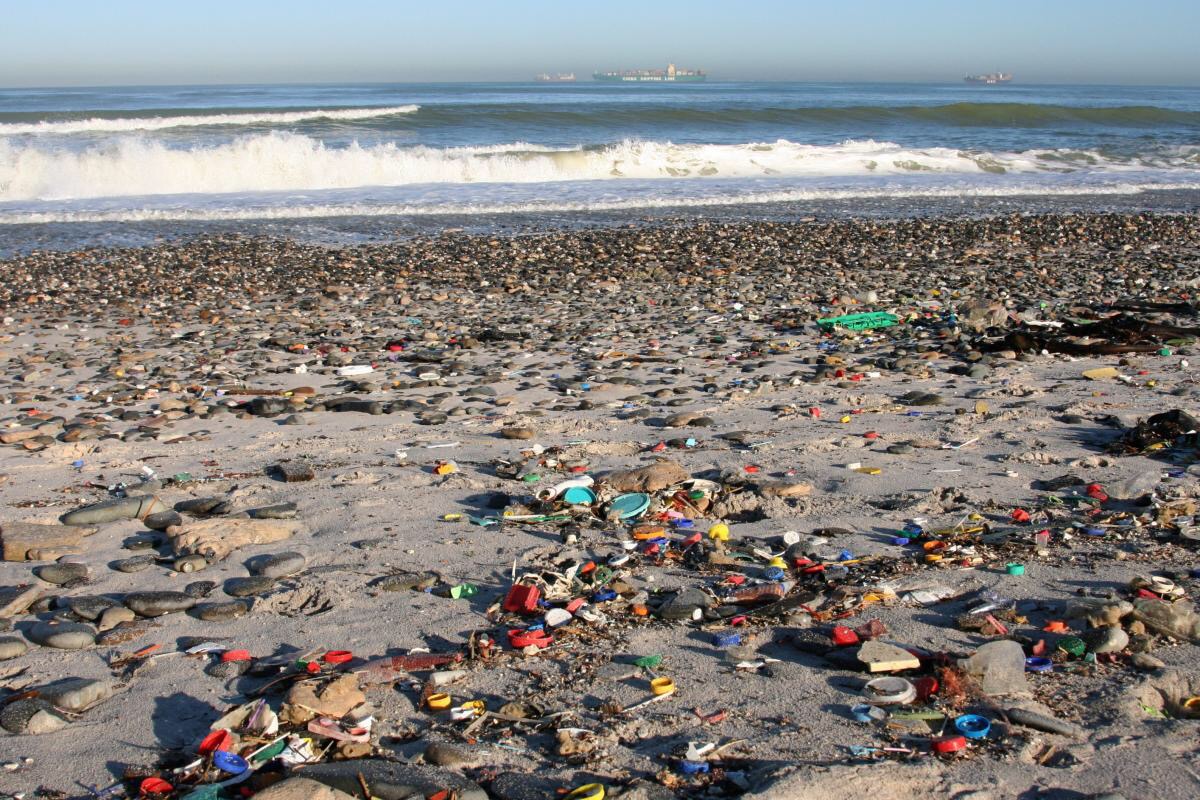
Why is that the case?
Because you can do something about it
now.
In 2013, the American NGO and world’s biggest shoreline cleanup initiator, Ocean Conservancy, claimed in their Trash Free Seas Report that 12,329,332 lbs (or 5,592,491 kg) of trash were removed from shorelines all over the world (Ocean Conservancy, 2015).
Although we should celebrate this as a success, it is important to consider that the report only reflects the small number of countries that participated.
Of these countries, it is also worth considering the bias around which shorelines were targeted and which were not. (ie. near big cities and in more developed countries, neglecting isolated areas and poorer countries.).
There is a lot more that has to be done.
What’s so bad about garbage on the beach?
According to S.B. Sheavly and K.M. Register (2007), beach garbage creates a negative impact…
On sea life
- Sea mammals, seabirds and fish species can become entangled in nets, fishing line, ropes and other debris. Beach garbage can inflict cuts and wounds and entanglement creates the risk of being strangled or even drowned.
- Many animals ingest beach waste and are not able to regurgitate what they’ve eaten.
- Plastic pellets can look like fish eggs to animals, and plastic shopping bags can look like a jellyfish to a sea turtle.
- Eaten debris that does not break down in the stomach can give an animal a false sense of fullness, which may lead to starvation if the animal ceases eating.

(Taken from http://news.nationalgeographic.com/content/dam/news/photos/000/786/78625.ngsversion.1422285259310.adapt.768.1.jpg)
On humans
- Beach debris like broken glass, fishing line, disposed medical waste and syringes can harm or entangle beachgoers.
- Beach debris that has entered waterways from sewage outflow, such as condoms and tampons, pose threats to human health and safety.

(Taken from http://i.kinja-img.com/gawker-media/image/upload/hulixdge4bavkj1gtcbs.jpg)
Indirect implications according to the United States Environmental Protection Agency (2015) include…
Ecosystem alteration
- Efforts to remove waste can damage reefs, vegetation and shoreline habitats.
Invasive species
- Marine debris can aid in transporting species from one body of water to another, where they may not have existed previously. This can lead to species invasions.
In other words, beach debris effects many living and non-living organisms.
What’s the haps in the Great White North?
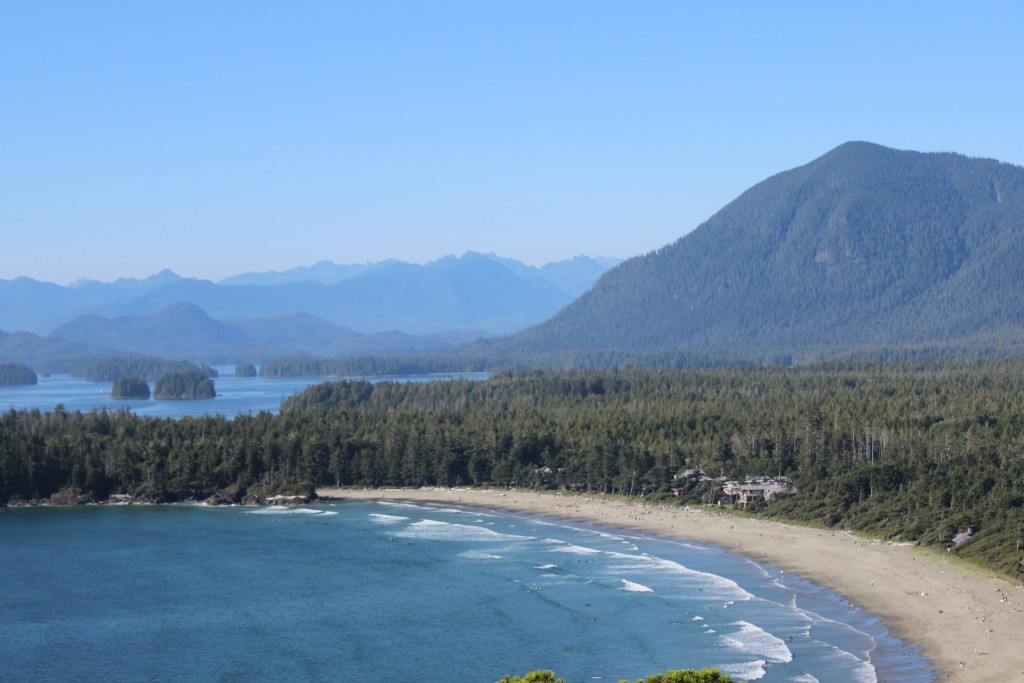
Canadians from coast to coast to coast – living in the land with the longest coastline of any other nation, we have some serious work to do ourselves.
The Great Canadian Shoreline Cleanup, supported by leading conservation NGOs: WWF and the Vancouver Aquarium Marine Science Centre, initiate annual and ongoing shoreline cleanups across the country.
“All year round, Canadians from coast to coast take to their local shorelines, picking up trash and debris before it impacts our waterways.” – Jean Fong, on Mayor’s Talk Trash this Fall for the Great Canadian Shoreline Cleanup Mayors Challenge
According to the Great Canadian Shoreline (2015):
Data from last year’s cleanup showed that over 70 dump trucks full of garbage were removed from Canadian shores
In fact, volunteer efforts in 2014 led to 14,399 garbage bags full of waste removed from shorelines across Canada.
Imagine 14,399 garbage bags piled up together… and there’s still more.
Here are the top 12 items collected on Canadian shorelines in 2014:
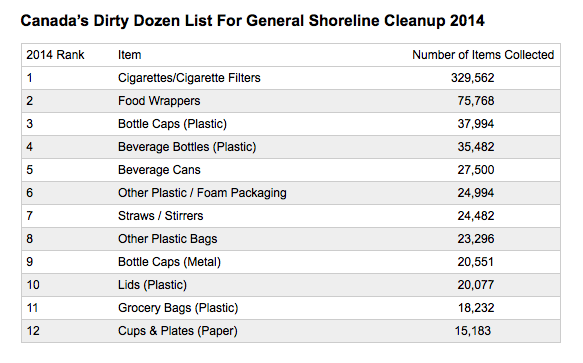
Do you notice a trend?
Straws, paper and plastic cups and plates, food wrappers, grocery bags.. all items that have been designed for an on-the-go society, and all items that make the majority of what ends up on shorelines around the world.
After cigarette butts, most of the waste collected is a result of people’s desire for quick and convenient meals and busy lifestyles.
So what can you do about it?
The most effective way to target waste on our shorelines is to make sure it never reaches the ocean.
Other than quitting smoking, there are alternative ways to reduce the amount of waste on our beaches.
1) bring the essentials!
Do not leave the house without bringing these waste-free essentials (because let’s face it, we often shop without planning to).
– reusable bags instead of plastic bags
Keep a few in your car, or a small one in your backpack or purse. You can buy them at the supermarket for a few dollars or click here if you feel the need to customize your bag
–reusable water bottle or coffee tumbler
We all need to keep well-hydrated, so invest in a reusable bottle! The beauty of living in Canada, is that most of our water is clean straight from the tap. This will reduce the amount of plastic lids and bottles in the shoreline count.

Packing a coffee tumbler with you will help reduce the amounts of cups, etc that end up in the landfill and on our beaches. (Plus most coffee shops give you a discount when you bring a personal thermos).
2. EAT IN OR BRING IN!
If you know you’re going to dine out, wait for a seat instead of ordering to-go, or bring your own take-out containers
Remember – it’s the take-out containers that are most common on Canadian shorelines.
If you plan on eating out, take the time out of your day to enjoy the restaurant atmosphere and eat where the food is made.
However, with deadlines and busy schedules, it’s understandable why that’s not always an option**, so… start bringing your own reusable containers to put the food in!
It’s time to start being one of those people if we want to make and see a difference on our beaches.
**If you must take your food to-go, make sure the containers are biodegradable and not made of paper with wax insulation or of styrofoam – or join in on the discussion.
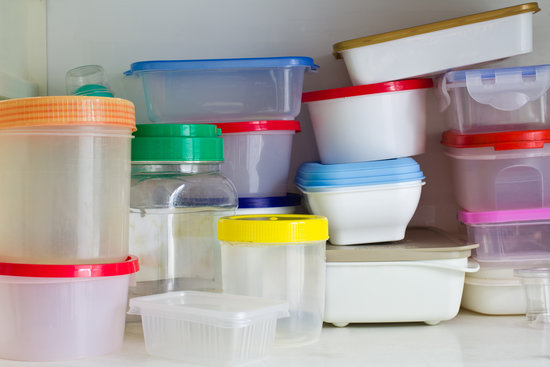
3. bin it!
When you’re out and about, make sure what you put in a public garbage bin won’t be carried off by wind and into drains.
Alternatively, be the person that picks up that piece of trash that’s blowing in the wind and place it in the proper receptacle.
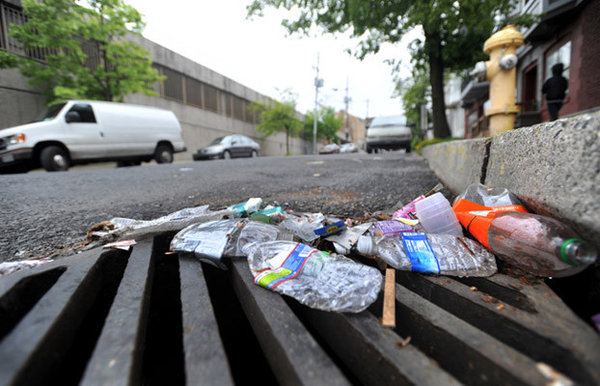
4. Join the Great Canadian Shoreline Cleanup near you!
There is always a project going on and there is always a need for beach cleaning and a need for site coordinators to start a cleanup. Consider taking a group of friends to a less populated beach area or stream, where more garbage can collect unnoticed.
Click here to see what has been done and where you can help.

5. get creative!
If you find garbage on the beach, instead of tossing it back into a rubbish bin to send to a landfill, see if you can find an alternative use.
Here are some examples:


6. Click here to see a few other suggestions from Great Canadian Shoreline Cleanup on how your actions can help reduce shoreline garbage.
Now it’s up to you, Canadians
and your actions as consumers in a busy world.
Although shoreline cleanup initiatives are working towards cleaner shores every year, there is still so much that can be done today.
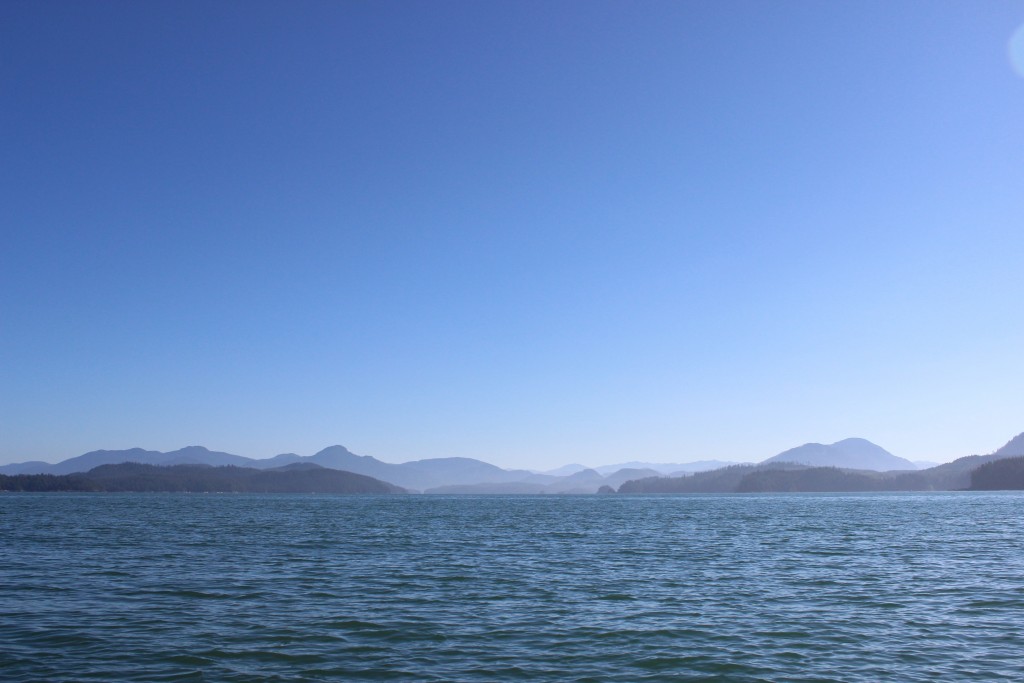
By doing your part to strive for cleaner shorelines, you’re working towards healthier coasts, healthier oceans and a healthier planet.
Other peculiar Canadian shoreline finds are shown below.
References:
Great Canadian Shoreline Cleanup. (2015). Great Canadian Shoreline Cleanup. Retrieved from http://shorelinecleanup.ca/en/about/our-history
Ocean Conservancy. (2015). 2014 Trash Free Seas Report: By the numbers. Retrieved from http://www.oceanconservancy.org/our-work/marine-debris/2014-by-the-numbers.html
Sheavly, S., & Register, K. (2007). Marine Debris & Plastics: Environmental Concerns, Sources, Impacts and Solutions. Polym. Environ, 15, 301-305. doi:DOI 10.1007/s10924-007-0074-3
United States Environmental Protection Agency. (2015). Marine Debris Impacts. Retrieved from http://water.epa.gov/type/oceb/marinedebris/md_impacts.cfm
